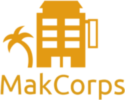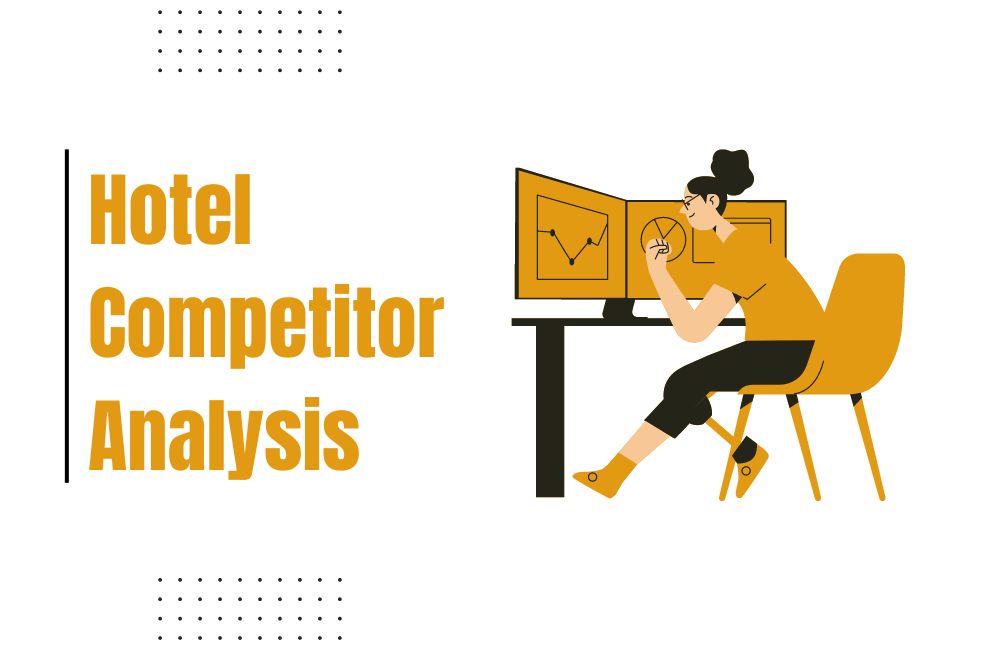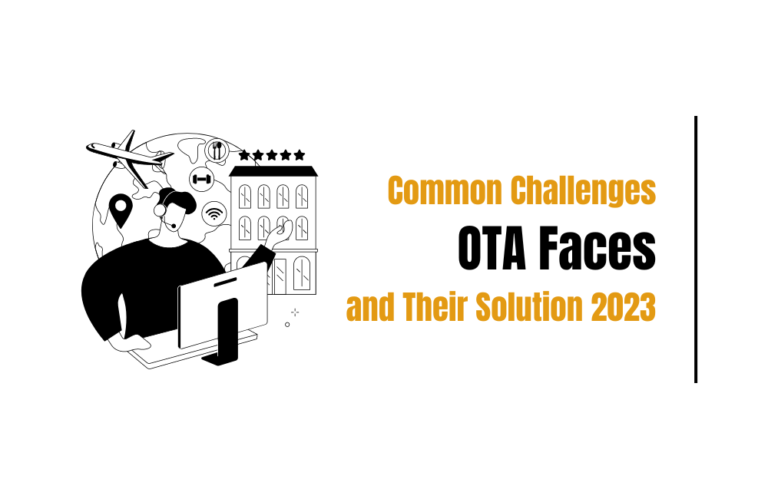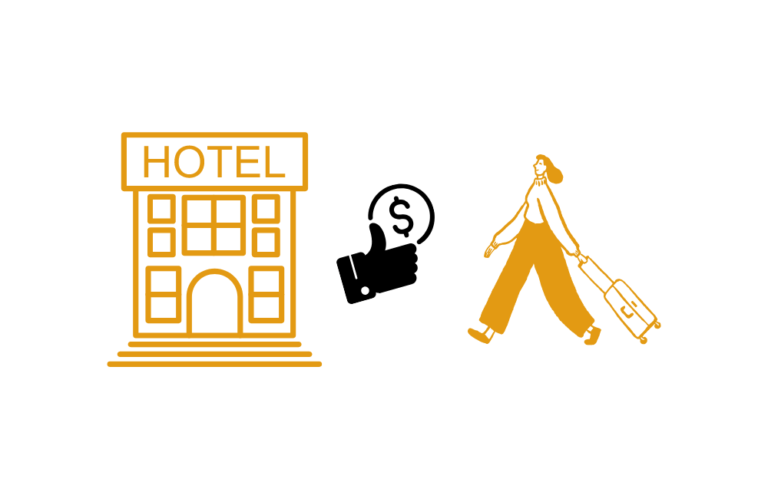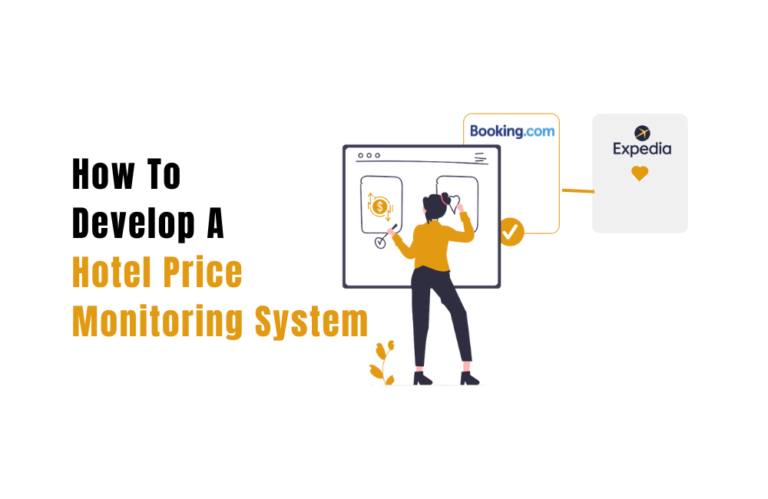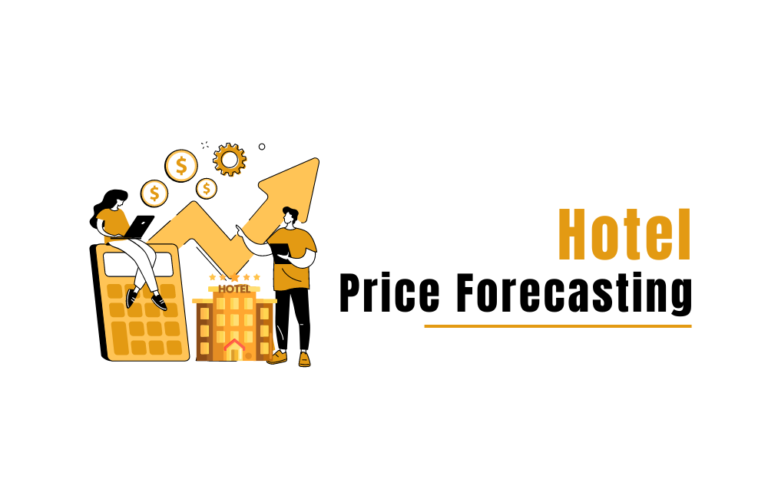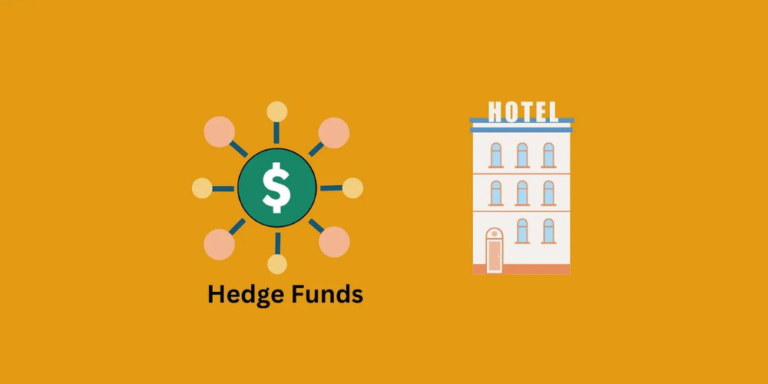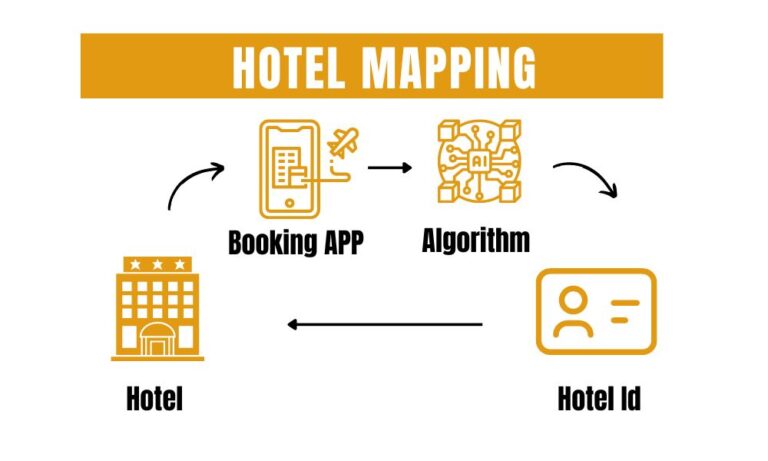What Is Hotel Competitor Analysis and How Do You Perform It?
Ever wonder how some properties seem to always hit the sweet spot on pricing? The answer is competitor analysis.
As the global economy gains momentum, the hotel industry is poised for substantial growth.
By 2025, projections indicate the market will reach a value of US$443.10 billion. This growth is expected to maintain a steady pace, with a projected annual increase of 3.67% over the next four years, pushing the market volume to US$511.90 billion by 2029. (Source: – Statista)

Alongside the hotel occupancy rates are returning to levels seen before the pandemic which singles the strong worldwide demand for hotel rooms.
But this boom also came with intense competition. Now hotels are no longer competing on just location or amenities—they’re competing on pricing strategy, market positioning, and timing.
So, how do you stay ahead when every hotel around you is fighting for the same guests? This is where competitor analysis becomes indispensable.
The hotel industry has become more crowded than ever before, and pricing your rooms without understanding what your competitors are doing is a recipe for missed opportunities.
Competitor analysis isn’t just about knowing their rates but also understanding their strategy, spotting market gaps, and making informed adjustments to your pricing.
As the competition tightens, hotels that actively monitor and react to their competitor’s moves stand a much better chance of maintaining profitability and boosting occupancy.
Now that you understand how critical competitor analysis is for your hotel’s success in this highly competitive market, let’s take a closer look.
We’ll explore what hotel competitor analysis truly means, a practical step-by-step guide, and key tools you can use to help you implement it effectively.
What Is Hotel Competitor Analysis?
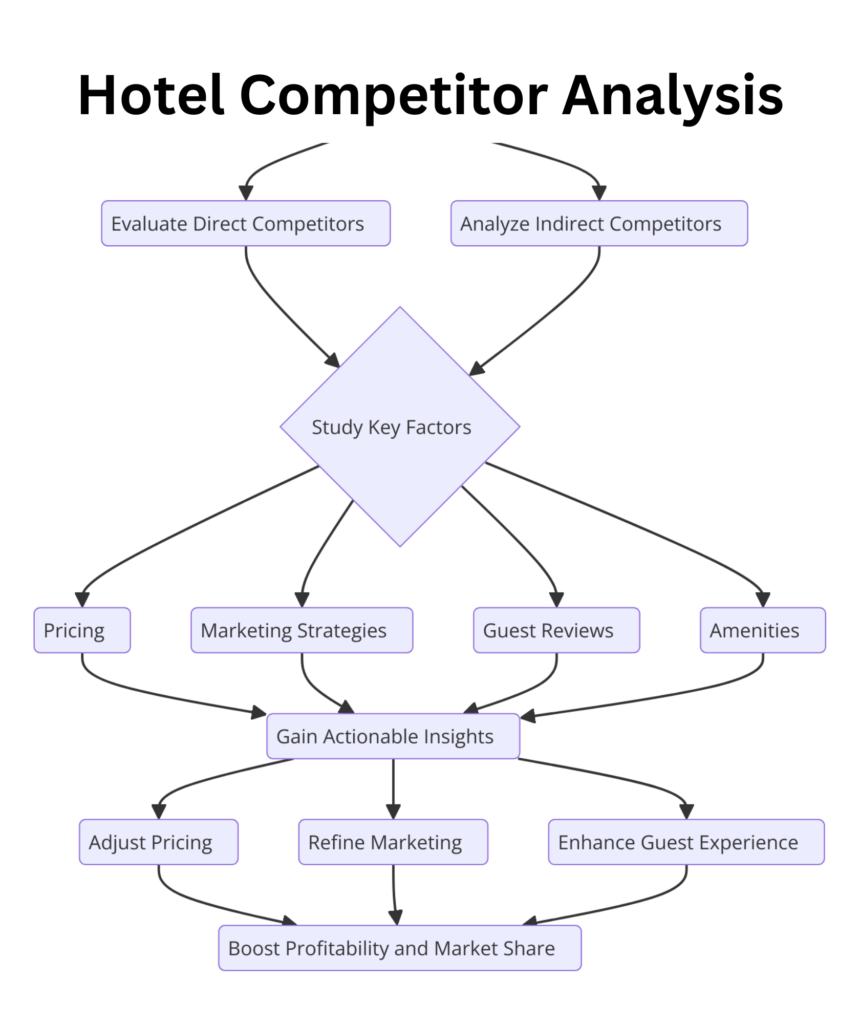
Hotel competitor analysis is the process of evaluating other hotels and indirect competitors, such as online travel agencies to understand their strategies and performance. By studying factors like pricing, marketing, guest reviews, and amenities, hotels can identify opportunities to improve their own offerings.
Staying competitive in the hospitality industry means more than just matching the hotel down the street. As PACE Dimensions highlights, future competition will increasingly come from indirect sources like OTAs that makes it crucial for hotels to develop smarter strategies.
The insights gained from competitor analysis help hotels adjust pricing, refine marketing, and enhance the guest experience. By staying aware of both direct and indirect competitors, hotels can make informed decisions that boost profitability and market share.
How to Perform Competitor Analysis for Your Hotel?
To survive and thrive in the competitive industry – you have to start with the basic premise that you need to know what your competition is doing.
That’s where hotel competition analysis comes into play – Competitor analysis also known as SWOT analysis, it helps you identify your strengths, weaknesses, opportunities, and threats which allows you to develop effective strategies to attract more guests and enhance your overall performance
In this step-by-step guide, we’ll walk you through the process of conducting a comprehensive hotel competition analysis.
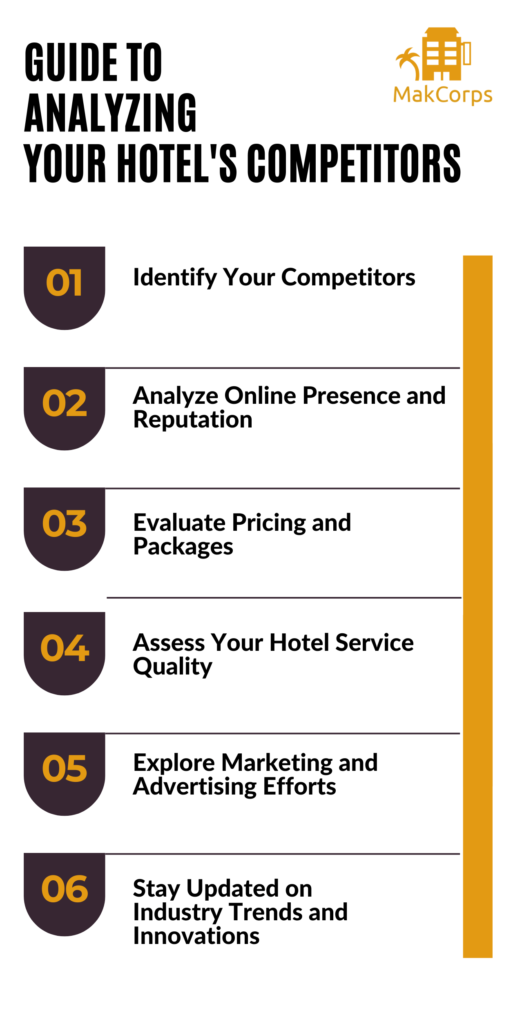
Step 1: Identify Your Competitors
Begin by identifying your direct and indirect competitors which is also known as hotel comp set analysis in the hotel industry.
Direct competitors are hotels that offer similar amenities and target the same customer segments.
Indirect competitors are establishments that provide alternative accommodation options.
Look for hotels within your geographical vicinity, but also consider global competitors. Websites, online travel agencies (OTAs), and industry reports can be valuable sources for competitor research.
Example: Suppose you own a boutique hotel in downtown Chicago. Your direct competitors might include other boutique hotels in the area, while indirect competitors could be large chain hotels or vacation rental platforms like Airbnb.
Step 2: Analyze Online Presence and Reputation
Evaluate your competitor’s online presence, including their website, social media accounts, and online reviews.
Analysis of their branding strategies, user experience, and the level of engagement with their audience.
Examine guest reviews to identify common strengths and weaknesses.
For doing so, online reputation management tools can provide valuable insights into your competitor’s performance and sentiment analysis.
Example: By analyzing your direct competitor’s online presence, you discovered that they have an engaging website with a visually appealing booking interface, active social media accounts that showcase positive guest experiences, and consistently positive online reviews praising their personalized service. This could be the reason why they are securing more bookings.
Step 3: Evaluate Pricing and Packages
Analyze your competitor’s pricing strategies and compare their rates to yours.
For accessing the pricing data of your competitors you can use tools such as MakCorps Hotel Price API. Using this you can get real-time hotel pricing data including amenities from 200+ OTAs for any given location.

With this API you will get price comparison data of your competitors on all the major OTAs.
Which helps you determine whether their rates are higher, lower, or on par with your own. And you can set your hotel room prices accordingly to gain a competitive edge.
Example: By conducting a competitor pricing analysis, a luxury hotel identifies that nearby competitor charges significantly higher rates for similar amenities.
After recognizing an opportunity, they adjust their own prices slightly below their competitor’s rates and position themselves as an attractive alternative for price-conscious guests seeking a lavish experience.
As a result, the hotel experiences a surge in bookings through capturing a larger market share which ultimately results in boosting its revenue.
Curious? How can you optimize your hotel prices competitively with MakCorps API? Watch the video tutorial below:-
With Makcorps API, you can easily pull hotel pricing data from multiple sources directly into a Google Sheet. Just follow the step-by-step tutorial, and at the end, you’ll find a ready-to-use Google Sheet template. Download the blueprint , make a few quick changes, and you’ll be able to see real-time hotel room prices of your competitor’s hotels in one place.

Step 4: Assess Service Quality
Gather information on the service quality offered by your competitors.
Consider factors such as cleanliness, staff friendliness, speed of service, and guest satisfaction.
Mystery shopping, reading guest reviews, and conducting surveys can provide valuable insights. Identify areas where your competitors excel and areas where they fall short.
Example: Through guest reviews and personal visits to your competitors, you discover that one of the boutique hotels excels in providing personalized attention to guests, while another hotel receives mixed reviews regarding cleanliness and housekeeping.
Step 5: Explore Marketing and Advertising Efforts
Study your competitor’s marketing and advertising strategies to understand how they attract and retain customers.
Look for their presence in print and online publications, social media campaigns, email newsletters, loyalty programs, and partnerships with local businesses.
Analyze their messaging, promotions, and target audience to make advantageous marketing decisions.
Example: Your analysis reveals that one of your competitors actively partners with local tour operators, restaurants, and spas to offer exclusive discounts to their guests which leverages these collaborations as a unique selling point.
Step 6: Stay Updated on Industry Trends and Innovations
Adopting the latest technology trends and innovations in the hotel industry can keep you way forward than most. To know the latest tech and strategies follow industry blogs, attend conferences, and join professional associations.
This knowledge will help you identify emerging opportunities and stay ahead of the competition.
Example: You learn that several of your competitors have started implementing mobile check-in and keyless entry systems to enhance guest convenience and streamline the check-in process.
Tools to Track Your Hotel Competitors
When it comes to succeeding in the hotel industry understanding your competition is crucial.
Here are some essential tools that will help you stay ahead:
Hotel Rate Shopping Tools
One of the best ways to monitor your competition is by using hotel rate shopping tools. These tools allow you to track competitor pricing so that you stay competitive without undercutting yourself. You can analyze how rates fluctuate based on seasons, demand, and special offers.
Social Media Monitoring Tools
Your competitors are active on social media, and so should you be. Social media monitoring tools help you track mentions of your hotel, competitors, and industry trends. These tools offer real-time insights into what customers are saying, giving you a chance to respond and adapt accordingly.
Review Management Tools
With the power of customer feedback, review management tools can make or break your reputation. These tools allow you to aggregate reviews from various platforms which helps you not miss any important feedback. It’s essential to respond to reviews both positive and negative to show potential guests that you care.
Reputation Management Tools
Beyond reviews, reputation management tools help track your hotel’s overall image. They give you a broader view of customer sentiment by pulling data from online platforms, forums, and social media. By staying on top of your hotel’s online reputation, you can quickly address issues and maintain a strong, positive image.
These tools not only simplify the process but also give you the insights needed to stay competitive in an ever-evolving market.
Conclusion
Conducting a perfect hotel industry competitive analysis is not a cup of tea for everyone and requires a lot of effort.
But by following our guide one step at a time you can get the leverage to set your business operations in a profitable manner.
Conduct a SWOT analysis to get a deeper understanding of your business and also about your competitors to accordingly optimize your business strategy.
Don’t forget that merely copying your competitors would not yield much result.
Setting apart your own unique vision in front of the customers with the best possible amenities can help you shape your winning strategy.
And since we are conducting a competitive analysis, one thing that truly matters is continuously watching your competition to maintain a positive brand image in front of your customers.
Adopt the above-mentioned strategies and build a powerful hotel brand image.
Frequently Asked Questions:
Is There Any Tool That Provides Historical Hotel Pricing Data?
Yes, MakCorps is a tool that provides historical hotel pricing data.
What data is most important in hotel competitor analysis?
Pricing, guest reviews, amenities, and OTA visibility are the top areas to benchmark.
How often should hotels do competitor analysis?
Ideally, weekly for pricing and monthly for deeper strategy reviews.
Can small hotels compete with big chains?
Absolutely. Local charm, personalized service, and agile pricing can outperform larger chains when executed well.
